
 Fans of the VHS classic Sorority Babes in the Slimeball Bowl-O-Rama were clamoring for a sequel. Well, in 1988, maybe. Three decades too late comes Sorority Babes in the Slimeball Bowl-O-Rama 2.
Fans of the VHS classic Sorority Babes in the Slimeball Bowl-O-Rama were clamoring for a sequel. Well, in 1988, maybe. Three decades too late comes Sorority Babes in the Slimeball Bowl-O-Rama 2.
Caught committing sex crimes against the sorority members of Pi Epsilon Delta, three frat boys thirsty for T&A agree to join the ladies in a little B&E: an after-hours trip to the local bowling alley to retrieve a hallowed trophy. Yes, it’s the same trophy that unleashes the same foul-mouthed imp, now made of minimally articulated foam, quoting MLK and voiced by Derek Jeremiah Reid (Bad Impulse).
One by one, the imp grants their wishes as literally as possible, to fatal results. Por ejemplo, a guy expressing desire to be “a famous rapper” is magically and moronically turned into a — wait for it — candy bar wrapper, which the imp then eats.
Scripted by Full Moon regular Kent Roudebush (Ooga Booga), Bowl-O-Rama 2 isn’t so much written as it is written over. More remake than sequel, it repeats the events of the original, but shorn of half an hour, the horror elements and, frankly, all of the fun. Given its general nonchalance and low production values, you’d be forgiven for assuming David DeCoteau returned to the director’s throne, but those duties fell to Brinke Stevens. She and fellow Sorority Babe Michelle Bauer reprise their roles in cameos, albeit separate from the action since they’re ghosts and not on the set. Linnea Quigley, however, is a no-show, so Kelli Maroney (Slayground) takes her part as the Pi Ep house mom.
Unless you want to see what Full Moon’s round of starlets look like in a group shower, skip it, as Sorority Babes in the Slimeball Bowl-O-Rama 2 rolls straight into the gutter. Its use of clips from the ’88 film serve as flashbacks, as well as a sad reminder of how producer Charles Band keeps lowering the bar for the Full Moon brand. —Rod Lott

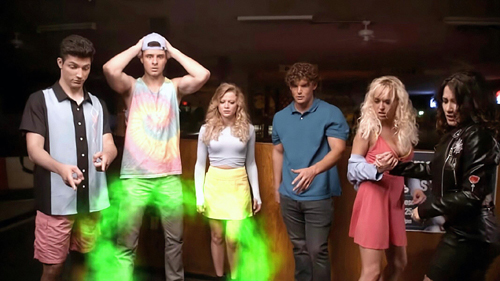
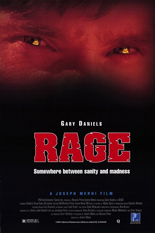
 In a right-place/wrong-time scenario, family man and schoolteacher Alex Gainer gets kidnapped by an enigmatic tech company secretly developing a super-soldier serum. After injecting illegals in this clandestine experiment, the firm moves to perfect physical specimens like Gainer, seeing how he’s portrayed by British kickboxer and American straight-to-video action hero Gary Daniels.
In a right-place/wrong-time scenario, family man and schoolteacher Alex Gainer gets kidnapped by an enigmatic tech company secretly developing a super-soldier serum. After injecting illegals in this clandestine experiment, the firm moves to perfect physical specimens like Gainer, seeing how he’s portrayed by British kickboxer and American straight-to-video action hero Gary Daniels. 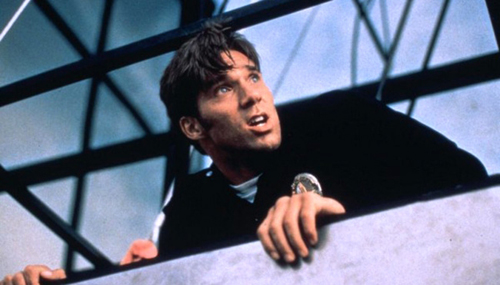
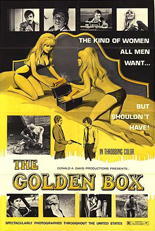
 Come spy with me, beckon Marsha Jordan and Ann Perry to curious viewers of
Come spy with me, beckon Marsha Jordan and Ann Perry to curious viewers of 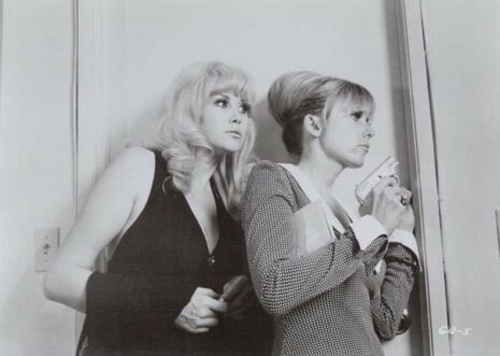

 In early 1995, I skipped class to attend a comic book-like convention near the now-demolished Holiday Inn on Oklahoma City’s north side. Even though the film bootleggers were always present in the exciting ads of cult-movie zines, this show was the first time I had seen them and their wares in person.
In early 1995, I skipped class to attend a comic book-like convention near the now-demolished Holiday Inn on Oklahoma City’s north side. Even though the film bootleggers were always present in the exciting ads of cult-movie zines, this show was the first time I had seen them and their wares in person.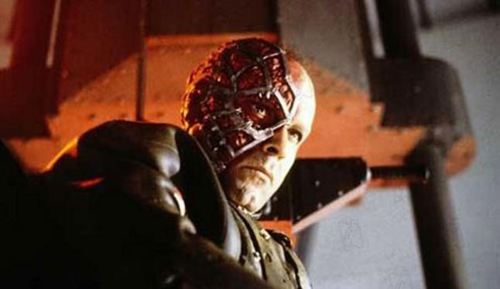


 Dubiously,
Dubiously, 